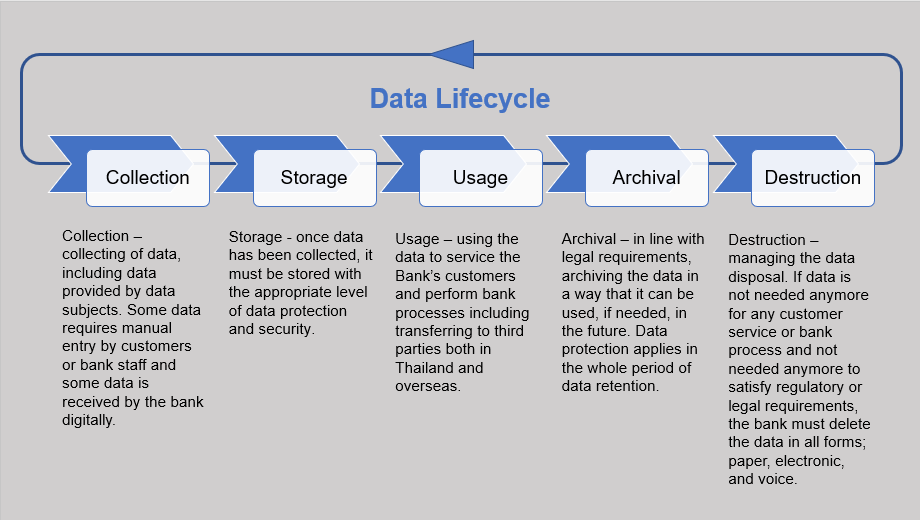How to Integrate Data Destruction Techniques into Your Cyber Security Method
How to Integrate Data Destruction Techniques into Your Cyber Security Method
Blog Article
Exploring the Value of Data Devastation in the Context of Computer Safety And Security Solutions and Protecting Confidential Data
In an era where information breaches are significantly usual, the relevance of reliable data devastation can not be overstated. Organizations should adopt stringent steps to make sure that sensitive info is not just shielded during its lifecycle however additionally emphatically gotten rid of when no longer necessary. The approaches employed for information elimination, coupled with conformity to legal criteria, play an essential duty in maintaining confidentiality and count on. Nevertheless, the implications of these practices prolong past simple conformity, affecting a company's credibility and functional honesty in the digital marketplace. What strategies can organizations execute to boost their data destruction procedures?
Understanding Data Devastation
Information devastation is an essential part of computer safety that entails the irreversible removal of data from storage gadgets to stop unauthorized access and potential information violations. In a progressively digital landscape, companies deal with enhanced risks associated with delicate details being poorly accessed or exploited. Reliable information devastation safeguards against these dangers, making sure that private dataâEUR" such as customer information, copyright, and economic recordsâEUR" can not be recovered after disposal.
Recognizing the value of data destruction expands beyond simple compliance with lawful and governing frameworks; it is vital for preserving organizational integrity and depend on. When data is improperly taken care of or improperly damaged, the effects can be extreme, including economic loss, reputational damage, and legal obligations.

Techniques of Information Obliteration

One common method is data cleaning, which includes overwriting existing data with random patterns numerous times. This strategy provides the initial data irretrievable, making it a preferred choice for companies looking for to safeguard secret information.
One more method is degaussing, which uses an effective electromagnetic field to disrupt the magnetic domains on storage space gadgets, effectively getting rid of the information. This approach is especially effective for magnetic media yet is not appropriate to solid-state drives.
Physical devastation is an additional robust method, including the shredding or crushing of storage space gadgets. This approach guarantees that information recuperation is essentially difficult, making it ideal for very delicate info.
Last but not least, security can work as a complementary method to information obliteration. By securing information prior to removal, companies can add an added layer of security, making certain that even if remnants are recuperated, they continue to be hard to reach without the decryption secret. Each method needs to be picked based upon the level of data sensitivity and the details security requirements of the company.
Legal Conformity and Information Security
Organizations should browse a complex landscape of lawful needs associated to information safety, specifically after carrying out approaches of information elimination. Various laws, such as the General Information Security Regulation (GDPR) and the Medical Insurance Portability and Liability Act (HIPAA), impose rigid standards on exactly how companies must handle and dispose of sensitive data. Failure to adhere to these guidelines can bring about significant lawful repercussions, consisting of significant fines and reputational damage.
Data damage processes must be diligently recorded to show compliance with relevant laws and criteria. This documentation not only acts as evidence of adherence to lawful responsibilities yet likewise illustrates a dedication to guarding sensitive information. Organizations should additionally develop clear plans pertaining to information retention and devastation timelines, making sure that information is not held longer than necessary.

Additionally, normal audits and analyses of data damage practices are vital to keep compliance and adapt to developing lawful structures (data destruction). By proactively resolving lawful needs, organizations can minimize threats related to data violations and show their dedication to information safety. Ultimately, focusing on legal conformity in data devastation processes is not simply a regulatory obligation, but an essential aspect of a robust data safety and security technique
Effect on Organization Reputation
The online reputation of a company can be considerably impacted by its technique to information damage and monitoring. In today's electronic landscape, where information breaches can take place anytime, the failing to correctly throw away sensitive info can cause serious consequences. Organizations that improperly take care of information devastation threat revealing you can check here personal customer info, which not just breaches personal privacy laws however likewise erodes trust fund among stakeholders and clients.
A ruined online reputation can result in lowered client commitment, as clients come to be reluctant to involve with a business that has actually demonstrated neglect in securing their data. Unfavorable attention surrounding a data violation can have a lasting result, as potential consumers could be discouraged by the viewed lack of safety and security. This can lead to a next direct decrease in earnings and market share.
In addition, companies that focus on information devastation as component of their security technique can enhance their credibility by showcasing their dedication to safeguarding sensitive details. By taking on rigid data monitoring methods, organizations can not only alleviate dangers yet likewise position themselves as credible entities in their corresponding markets, thus reinforcing their overall brand name image.

Ideal Practices for Secure Disposal
Implementing best practices for safe disposal of information is essential for minimizing risks linked with data breaches and guaranteeing compliance with privacy laws. Organizations should adopt a detailed data disposal policy that describes treatments for both physical and electronic information devastation.
For physical information storage devices, such as tough drives, shredding or degaussing is advised to stop data recovery. Furthermore, companies must keep a chain of safekeeping documents throughout the disposal process, ensuring accountability and traceability of disposed products.
For digital information, utilizing software that abides by market standards for information wiping is important. This software must overwrite existing data multiple times, making healing basically impossible. It is additionally crucial to verify the performance of the information devastation process with audits or third-party assessments.
Training workers on safe and secure disposal techniques adds another layer of safety and security, as human mistake can commonly result in information direct exposure. Frequently upgrading and evaluating disposal policies makes sure positioning with developing regulations and technical improvements. By executing these finest practices, organizations can significantly minimize the threat of unapproved information access and enhance their total data security strategy.
Final Thought
To conclude, information damage is a basic element of computer system safety and security services that makes certain the protection of personal information from unapproved gain access to. Applying efficient techniques of information removal, adhering to lawful conformity, and identifying the influence on organization online reputation are essential components of an extensive data safety strategy. By embracing ideal techniques for safe disposal, companies can foster count on with customers and protect delicate data, eventually adding to a more secure electronic landscape.
In an age where data breaches are increasingly usual, the value of effective data destruction can not be overemphasized.Data devastation is a crucial element of computer system safety that entails the long-term elimination of information from storage gadgets to avoid unapproved gain access to and prospective information violations. Organizations must also establish clear plans relating to data retention and destruction timelines, ensuring that data is not held longer than necessary.
By proactively attending to legal needs, companies can alleviate risks connected with information violations and show their commitment to data safety and security (data destruction). Inevitably, focusing on legal conformity in information damage processes is not just why not try these out a regulatory commitment, yet a basic element of a robust information security technique
Report this page